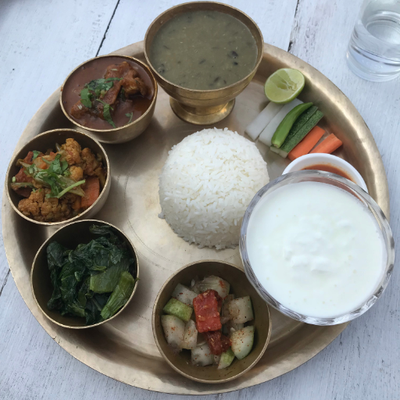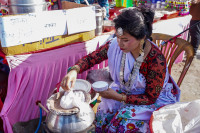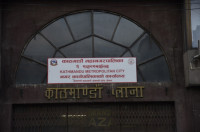Food
Viet nom: Boudha gets a slice of something new
Funky and fresh, Bami Vietnamese Cuisine is bringing some authenticity and freshness to the table.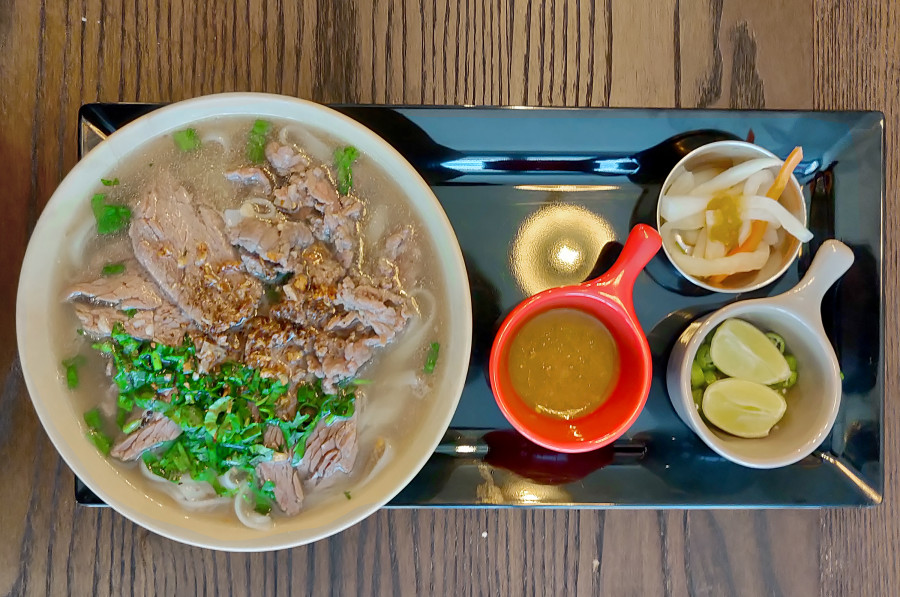
Hantakali
It's tiny, cosy and cute, which in this day and age means Instagram-worthy. As far as interiors go, it's hard not to be impressed by Bami Vietnamese Cuisine's decor. Searching through Pinterest for restaurant inspiration, it’s likely one will find something not dissimilar from Bami.
A few weeks ago, the Boudha food circle was abuzz with the restaurant’s opening. It isn't the first Vietnamese restaurant in Boudha, that title goes to Pho 99, which is located inside the stupa circle—much sought after business real estate. Unlike Pho 99, however, Bami is tucked away in the less touristy area of Fulbari road, a five-minute walk from the stupa.
The first thing diners will notice is the funky colourful wallpaper, which adorns a wall right opposite the restaurant's entrance. The furniture used is minimalist in design, the cushions on the chairs and benches have colourful patterns on them. The liberal use of green plants and flowers further adds vibrancy, and the lighting used is warm and inviting.
The menu is simple, and the options are quite limited, but features some of the most popular dishes from Vietnamese cuisine. For the lovers of sandwiches, an entire page of the menu is dedicated to bánh mì, the famous Vietnamese sandwich, will leave them delighted. Half a page is for fried pho and what they call Vietnamese pasta. For some reason, broth-based pho has been given a miss on the menu, but it can still be ordered depending on the availability of the time-consuming soup. The snacks section features the classic spring rolls. Dulcet condensed milk-based Vietnamese coffee is also on the menu, along with a range of teas.
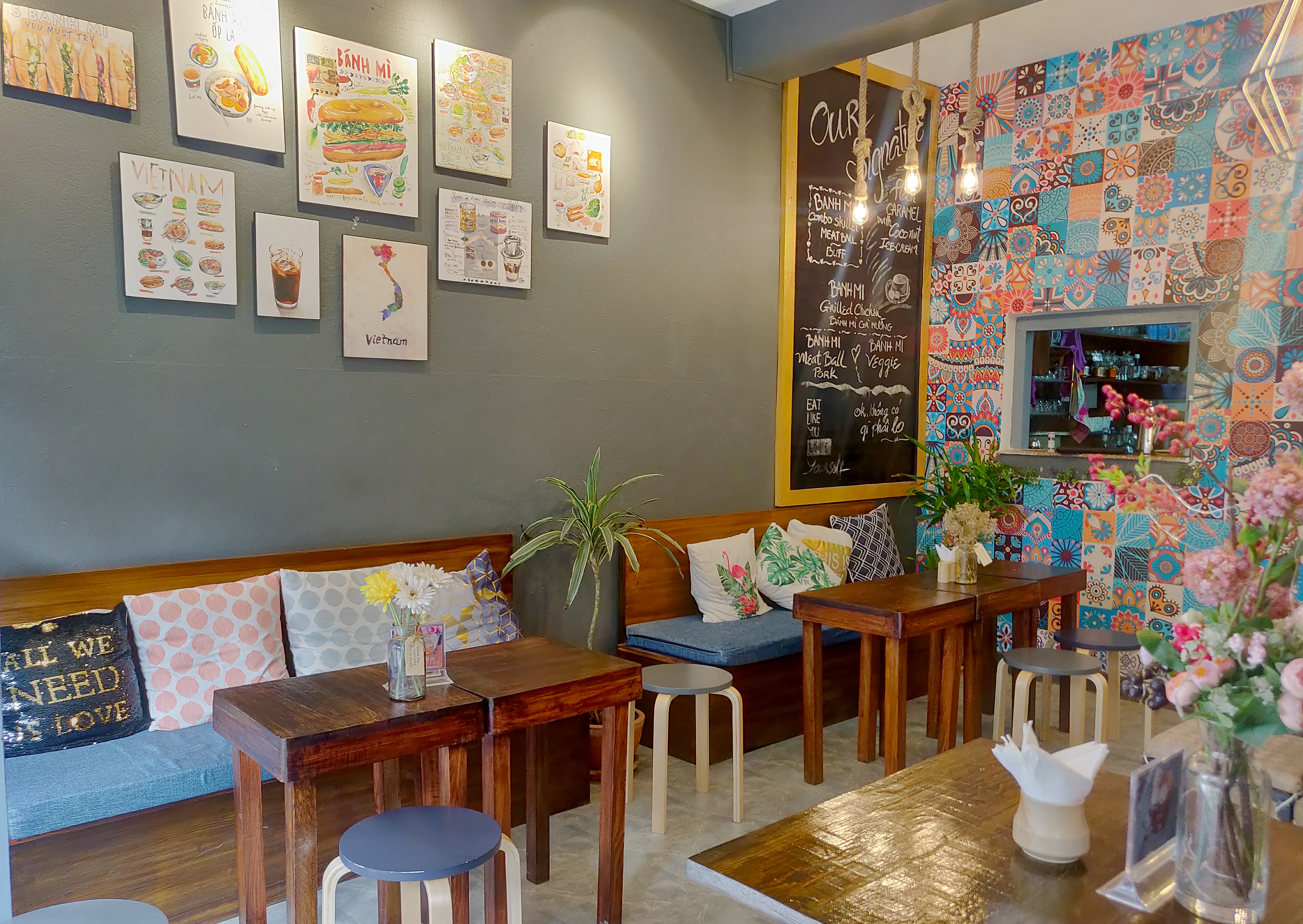
The first dish to arrive at the table is Bánh mì combo skillet meatball. The dish, as the name suggests, is served on a skillet and includes a patty of chicken pâté, a couple meatballs, an egg, sliced cucumber and a bánh mì. The chicken pâté is cooked and blended into an appropriate silken texture. On top the mild livery flavour of the pâté there's a range of flavours for the palate to explore, from hot and sour to sweet. The bánh mì, Vietnam's version of its former French coloniser's baguette, has a brittle exterior, which makes a comforting crackling sound when broken. The interior is soft and airy, mimicking the Vietamese rice flour-based loaf.
Lather the pâté on the bánh mì like you would with mayonnaise, or dip it into the pâté, and the combination works delightfully. The two are the stars of the dish. The meatballs lack the flavour complexity of the pâté, but are in no way bland. The egg feels out of place, however, stuck somewhere in purgatory—it’s half-fried and half-poached because it was cooked alongside everything else in the skillet—it seems to be added to the dish to justify the word ‘combo’.
Next to come to the table is buff pho. At Rs 580 for a bowl, the pho is quite expensive, and it doesn't help that Bami’s bowl is smaller than the basins served in other Vietnamese restaurants in town. Even though there are sizable slabs of meat draped over the noodles, one must wonder whether the portion justifies the cost.
Sprinkled on top of the gorgeous meat are flecks of crushed Sichuan pepper, chopped coriander and green onions, which add some grazzy zing to the meaty mass of noodles. But any lingering cost-to-portion-ratio guilt you have dissipates immediately with the first sip of the broth. As it should be in all good phos, the broth is deeply meaty and savoury, minus the unpleasant smell of unclean bones. The chef later informs that the bones are appropriately soaked in salted water for two hours, leaching out any impurities. The bones are then slow-cooked in star anise, cinnamon and a few other spices for six hours—perhaps this is the reason it’s not a permanent fixture on the eatery’s menu. The rice noodles are slippery and firm, not the well-cooked thukpa noodles one might find in other Boudha spots. The buff is well cooked, but not well-done, alluding to a slow-cook. The caramelised onions, which are an integral part of all pho broths, lend a faint hint of sweetness, which teeters with the mild spice of crushed peppers. By the time every drop of the broth is greedily sipped and every strand of the noodles joyously slurped, you will likely be grinning from ear to ear.
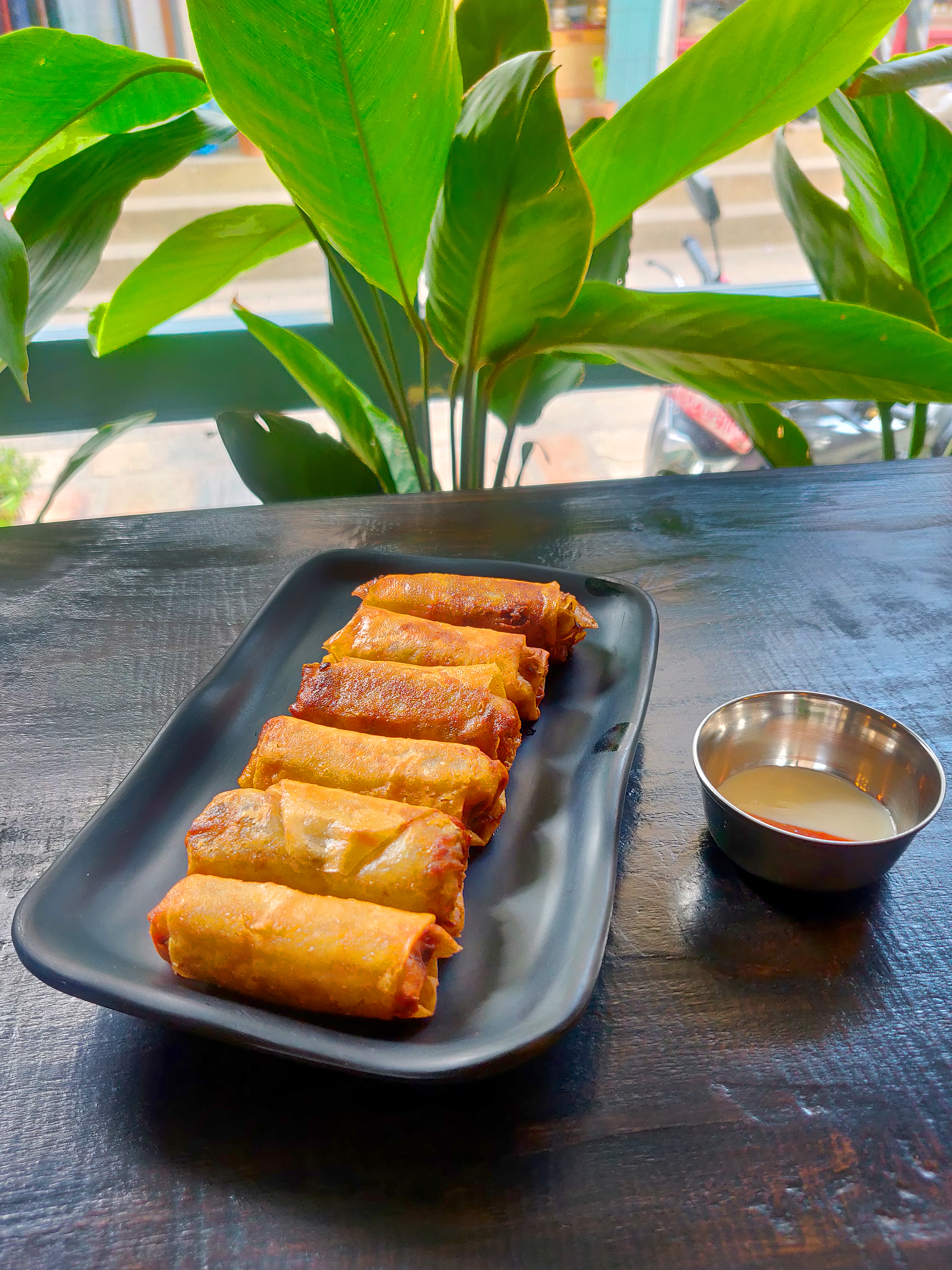
Amidst the chorus of sips and slurps, fried spring rolls arrive at the table, but the dish remains ignored until the bowl of pho is wiped clean.
The chef says the spring roll originates from southern Vietnam, and at Bami, six fingers of mung bean flour wrappers encase minced pork, mushrooms, glass noodles, carrots and onions. The wrappers are delicately crispy and disintegrate at the slightest touch. It is several worlds and several grams of dough away from the dense wrappers of spring rolls we Nepalis are used to. The fillings are kept simple with minimal use of spices. The only discernible addition is pepper, which the staff says is toasted beforehand. There's an added saccharine hit courtesy of caramelised onions too. The dish's disappointment comes in the form of its lazy dip—tomato ketchup and mayonnaise. A dunkable, acetic mix of fish sauce, sugar, chilli and lime or vinegar would have lended some balance to the unctuous stogies.
Impressed by the undressed bánh mì of the first dish, bánh mì grilled chicken, a fully constructed sandwich, is ordered. The bánh mì is bisected, and the top half is lathered with mayonnaise, while the foundation is covered in chicken pâté. Between the halves are slices of crunchy carrots and cucumber, strips of radish, fresh cilantro, grilled chicken, and the restaurant’s special pickle, made using green and red chilli. The pickle packs heat, but there's a hint of sweetness hiding in the stuffing that balances the sting. The bánh mì, like the one before, gives the illusion of a tough exterior, but its duplicity is revealed in its light core.

Up next is a dish popular from Ha Noi, fried pho. It’s essentially an omelette stuffed with slight pan-fried pho, topped with shredded buff, spinach, crushed pepper and a sweetened sauce. A lot in Vietnamese cuisine is about playing with soft and crunchy, the chef says, and this dish is testament to that—forest green spinach still has texture, ponds of sauce pool in the thinly sliced buff, and pan-fried noodles add a crunch to the omelette's moist and soft landscape.
Nepal’s perceptions of Vietnamese food have long-been dictated by Pho 99 and a couple of others, but Bami is bringing something new to the table—banh mi. While portion-weary and penny-thrifty folks might opt against the more meager morsels of noodles, the rest of the menu offers a part of Vietnam previously unknown. Bami is clearly trying to be itself, rather than copying the successful recipes of other places, and that’s why it’s worth the extra five minutes’ walk.
Bami Vietnamese Cuisine Rs 220-580
Food: ★★★
Ambience: ★★★★
Value: ★★★
What we ate
Bánh mì combo skillet meatball Rs 450
Buff pho Rs 580
Fried spring roll Rs 200
Bánh mì grilled chicken Rs 320
Fried pho Rs 350




 16.12°C Kathmandu
16.12°C Kathmandu